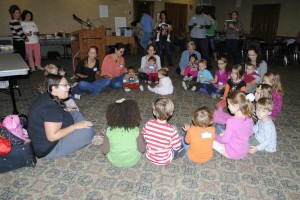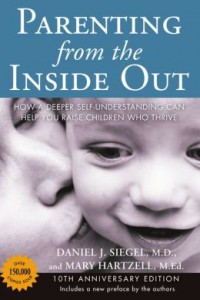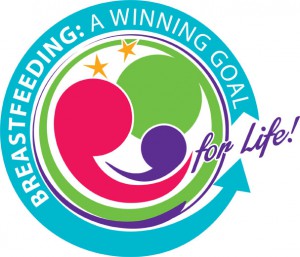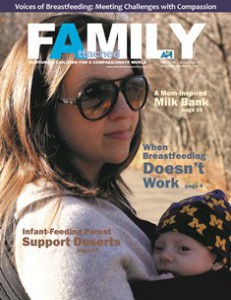Editor’s Note: This post was originally published April 20, 2008, but its immortal message continues to ring true today, more so than ever in this ever-increasing Internet Age.
 We’ve all heard the saying, “It takes a village to raise a child,” and it is still true, even in these modern days of computers, mobile phones, dial-a-pizza and TV on demand. In fact, I would say now, more than ever, we all need our little village.
We’ve all heard the saying, “It takes a village to raise a child,” and it is still true, even in these modern days of computers, mobile phones, dial-a-pizza and TV on demand. In fact, I would say now, more than ever, we all need our little village.
Before our daughter was born, I never really thought much about how isolated our lives had become. After her arrival, I started to actively seek out a village for her. We moved closer to my parents and sisters, back to the town I grew up in. I started going to mother-and-baby groups, La Leche League meetings and other breastfeeding support groups, sling-meets, anything really where babies were, hoping to find like-minded mothers who shared our way of parenting.
And I started to realize that the village is needed, not so much for the little baby, but to support the parents–to help and nurture them. In doing so, the parents can be free and feel confident raising their little baby, learning about all her little quirks and celebrating this new little life.
I began to realize that a village doesn’t have to be a physical location. I tentatively began to wander around online forums and entered the wonderful world of blogging. I’m a computer programmer by trade. Before I started on my parenting path, the Internet had always been a work tool, a research or holiday planning guide. Now I began to see a different aspect to it.
Very quickly, I found like-minded people, mothers who breastfed past six months, parents who coslept, fathers who were wholeheartedly involved in parenting, parents who believed in gentle discipline and, best of all, parents who admitted that, yes, their babies didn’t sleep through the night and that it was okay, they would in their own time. I found a name for our parenting beliefs: Attachment Parenting.
And I made friends.
I hadn’t really believed that you could make friends online before this. But you can, and you often share a lot more with these friends than with the person who lives next door to you. So with these discoveries my online, worldwide village began to grow. It has been a huge support for me.
I know when I’m lying awake feeding my teething daughter for the 10th time during the night in the middle of winter, that my friend in Australia is awake playing with her daughter in a beautiful summer’s day. At the same time, my friend in England is probably also awake, feeding her daughter as she is also teething at the moment. Maybe the women I know in America are only getting ready to go to bed now and are nursing their children to sleep or reading just one more story. Or it might be bathtime or dinnertime. But it is good to know that we’re all there, busy parenting our little ones as they go about the busy business of growing up.
Locally I have met many wonderful mothers and fathers, many of whom do not share my parenting approach. Some are still breastfeeding; some react with amusement when they see my 17 month old nursing. Some cosleep; most do not. Many have sleep-trained their babies; most react with shock when I mention that my daughter doesn’t sleep through the night. Several of them practice gentle discipline; many do not. Many gasp when they see me carrying my daughter in a sling; some happily show me their own slings! But each of them has a child whom they love, and this love brings us all together into a little village so that our children will have friends and so that we can sit down with a cup of tea and chat aimlessly for a while as the children play.
Both my real-life village and my online global village are very important to me. They both nurture and support me, in very different ways. I sought out my online village as I needed to connect with other people with similar parenting beliefs. I sought out my local village so that my daughter would have a community. And I have made friends in both villages, both with people I have everything in common with and with people I have almost nothing in common with!
While my daughter reaps the benefits of our real-life village, playing joyfully with all her friends, and I enjoy a nice cup of tea and a chat, I am also happy in the knowledge that if I need advice–or a moan–I can go to my online community and get help, real help, where the other parents understand why we parent the way we do, how it can have its difficulties, but also how it can be full of joy! It feels good to know that there are other people who feel the same way you do, who are raising their children in a similar way, who are creating secure and compassionate families. It is great to be able to ask for help and have other people give you advice that comes from the same parenting beliefs. Attachment Parenting International’s many online resources are opportunities for us all to add a few new friends to our global online villages.
Looking to connect with more AP-minded parents? Read more than six years’ worth of parents’ stories here on APtly Said, begin sharing in the API Neighborhood or start following discussions on API Reads, for starters. And don’t forget to check out if there’s a local API Support Group near you–to add to your real-life AP village.






